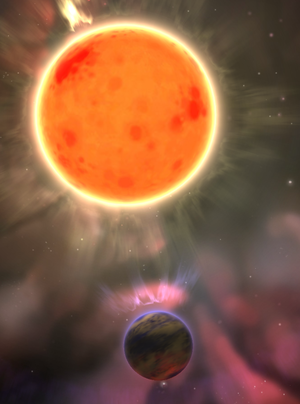Hyperspace Topography
Jump to navigation
Jump to search
Hyperspace Topography is a major event that progresses when the player performs specific actions, and provides various benefits. It becomes visible as soon as any amount of points is gained, which can be done immediately.
Factors
To scan something, you need to use Active Sensor Burst nearby. Scans can only be done once per object. Neutrino burst and purchasing data from scavengers can be done repeatedly, but doing it in the same general area too soon won't give topographic data.
- Neutrino burst (interact with a sensor array with three volatiles): +10 for makeshift sensor array, +20 for pristine. Also reveals nearby slipstreams. Can be done at any array.
- Randomly purchased from a Scavenger fleet for 200 credits per point: +5 to +10. Also reveals nearby slipstreams.
- Randomly salvaged, low importance (derelict ship in hyperspace): +10 to +20.
- Randomly salvaged, medium importance (???): +30 to +50.
- Randomly salvaged, high importance (research station): +60 to +100.
- Moving through hyperspace at >20 burn: scaling from 0 at 20 to 3 at 30, to 6 at 40, to 12 at 50 burn per day, given out in chunks of 20.
- Scan a magnetic field (must be in it): +5.
- Scan a gas giant: +5.
- Scan a neutron star (must be inside corona): +10.
- Scan the pulsar beam of a neutron star (must be in it): +25.
- Scan a black hole at long range (just inside the event horizon): +15.
- Scan a black hole at short range (inside the "halo"): +40. Does not stack with long range scan.
- Scan the center of a starless nebula: +15.
- Scan the center of a binary star system (the stars need to be close together): +20.
- Scan the center of a trinary star system: +30.
- Scan a stellar conflux (Tia system): +20, replaces binary star system.
- Scan an ion storm (Duzahk system, Aka Mainyu, must be in it): +50.
- Disrupt an Abyssal light (+6-+8, varies, disrupting multiple lights at once gives diminishing returns)
- Investigate an Abyssal black hole (+40, may vary)
Effects
- 100 points: reduces fuel costs inside slipstreams by 75%, multiplicative with the inherent 50% reduction for a total of 87.5% (1/8).
- 250 points: allows player colonies with spaceports to detect slipstreams in a range depending on size, spaceport level, and nearby sensor arrays.
- 400 points: unlocks the Reverse Polarity ability, allowing to travel in the opposite direction in a slipstream.
- 550 points: increases maximum burn by 3 when in hyperspace.
- 700 points: unlocks the Generate Slipsurge ability.
- 1000 points: gives topographic data item, worth 50,000c, then reduces progress to a random number between 700 and 750.
Note that purchasing topographic data from Scavengers is never credit-positive; even if the progress is only reduced to 750, it still means every point is worth 200c when you sell the Topographic Data item, while Scavengers charge you 200c per point.
Up to date for latest version, 0.97a.
Category:
- Major events

